When it comes to organising your wedding invitations there is a lot more to consider that just the invite itself. If you’re struggling to differentiate between reception cards and response cards, read up on our guide below outlining exactly what needs to be included in your wedding invitation suite.
1/ Wedding Invitation
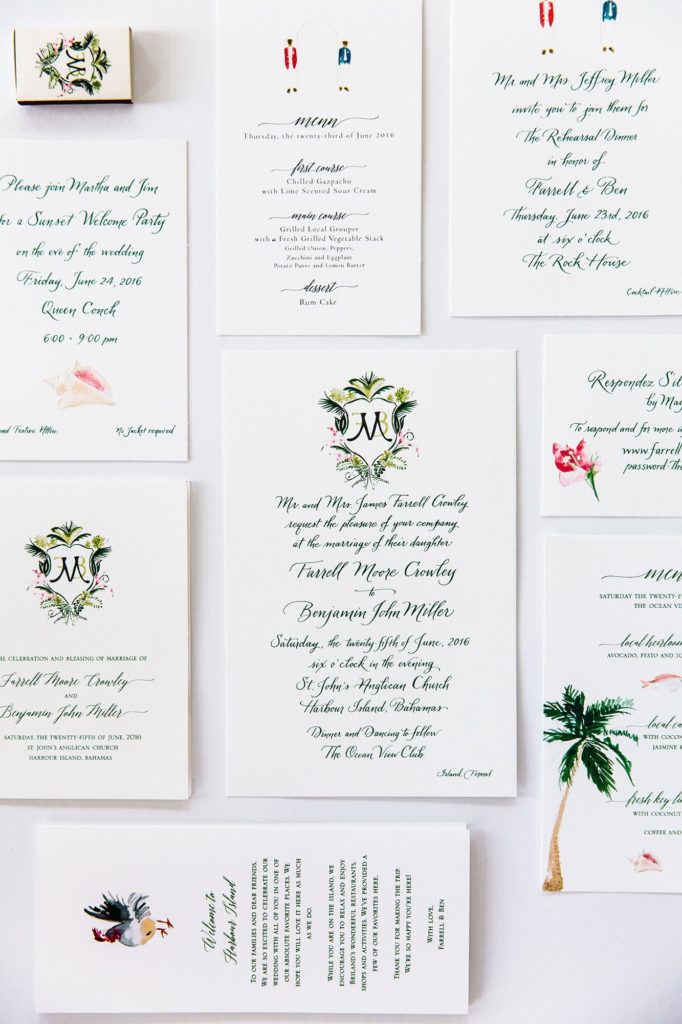 Olivia Rae James
Olivia Rae JamesFirst and foremost, the wedding invite is the most important element of any invitation suite. The invite itself is the one item from the envelope which is most likely displayed upon the mantlepiece or posted to the fridge so ensure all of the main details are included in this, that is time, date, both ceremony and reception locations and dress code. As all of these details are likely imprinted into your brain by the time you get around to organising the invitations, it is all too easy to skip over the finer details so ensure you double and triple check all spellings before giving the printer the go-ahead. Mistakes happen more often than you would think so there is no harm in asking a family member or friend to cast their eye over it also!
2/ Reception Card
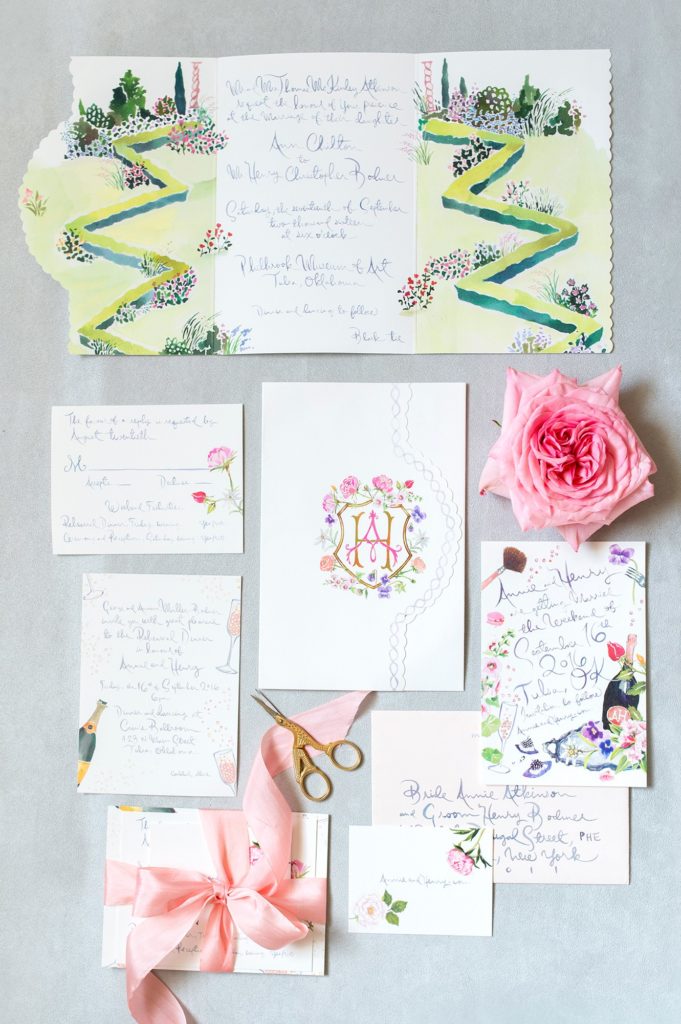 Ely Fair Photography
Ely Fair PhotographyIf your ceremony and reception are in different locations, you should include a separate card with the details of the reception. The reception card should include the formality and nature of the event, whether it be a dinner reception or buffet. If you are having an adults-only reception and are adamant to get this across then it should be put on the reception card and not on the invitation.
3/ Response Card
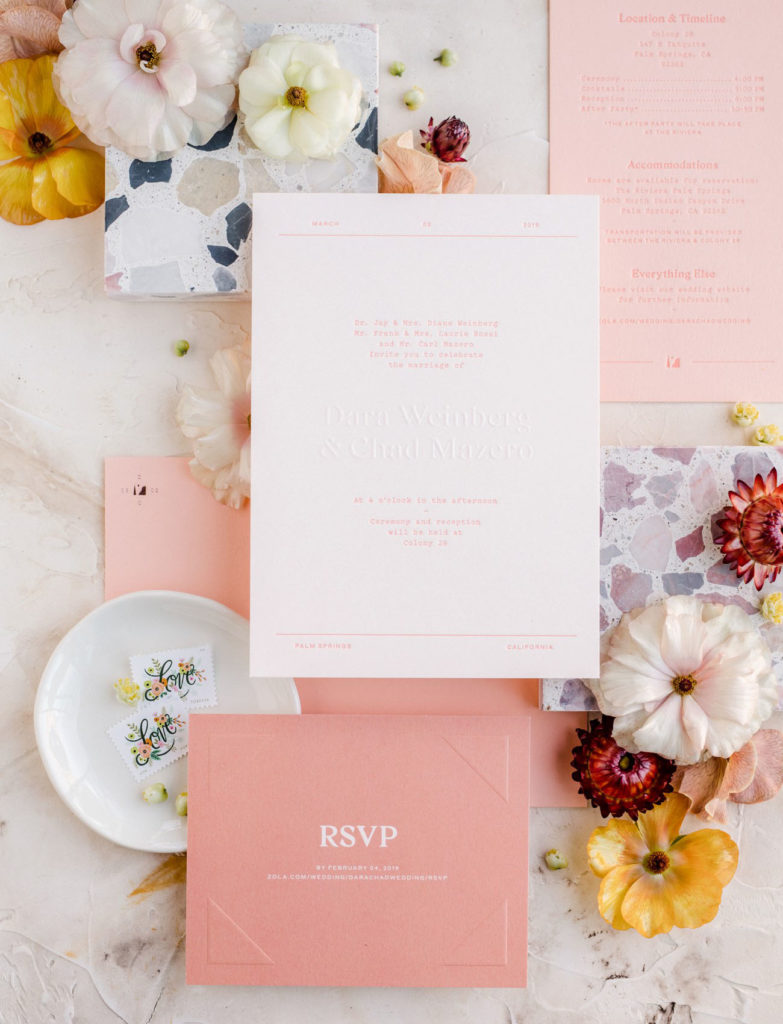 Anna Delores Photography
Anna Delores PhotographyPretty self-explanatory, the response card is for guests to notify you if they can attend the wedding. Don’t forget to include and addresses and stamped envelope when sending these out. Some couples also include menu choices on these cards if the venue requires advance notice. The modern approach to the response card is having an email address, website or phone number for guests to message their RSVP to but be considerate of older generations who may not be as au fait with this method.
4/ Directions
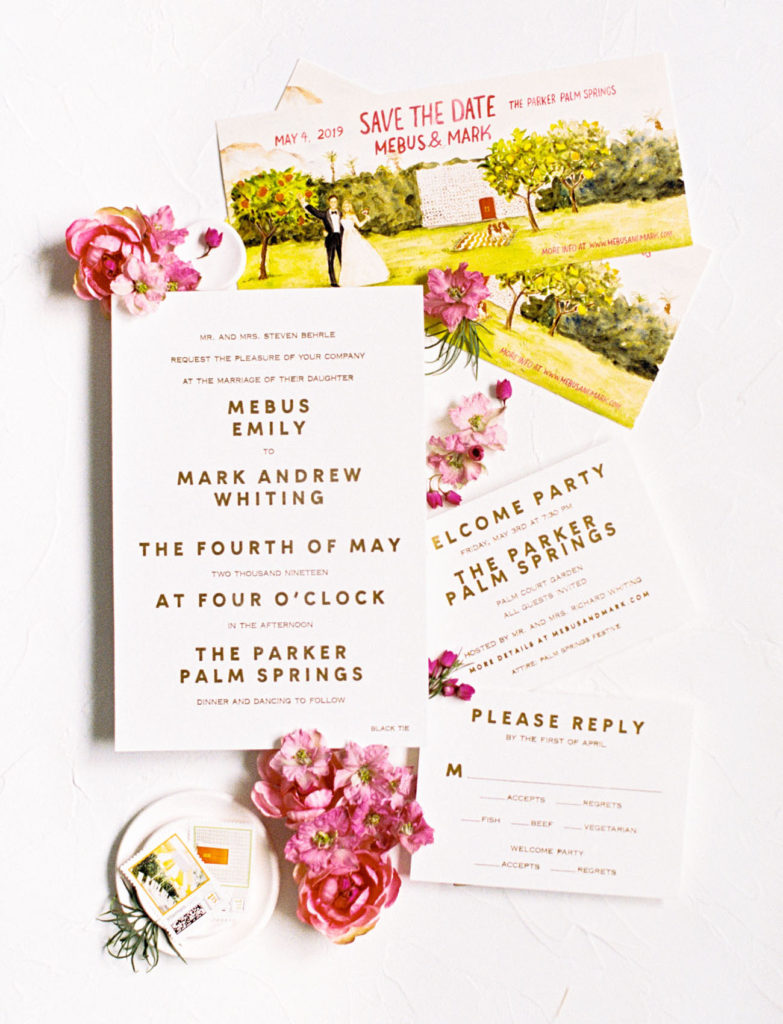 Britt Rene Photo
Britt Rene PhotoDon’t leave your guests depending on Google maps to find your venue, phones can die, people can lose reception – you don’t want guests turning up flustered and late. Include clear and concise directions to the church or ceremony and reception venue, highlight landmarks along to way so guests know they are on the right track and if the destination is in a spot which can be tricky to find, try to include a mini-map with the best route highlighted. Ensure the font on this legible so there is no room for error and easy for everyone to read, young and old. If you have a wedding website you should also include the address and directions here to be on the safe side. Accommodations Card
If your venue is in a different part of the country, or indeed a different country altogether, it can be helpful to include a list of recommended hotels or B&B’s in the vicinity. This is also a good place to include transport information, whether that be times of carriages which you may organise for the night of the wedding or phone numbers for local taxi companies.
5/ Itinerary
 Julia Winkler
Julia WinklerIf your wedding consists of more than just the wedding day itself, include a card detailing the weekend's activities whether that be a welcome drinks reception or a day-after bbq. People need to plan accordingly with time off work, baby sitters and hotel rooms, etc. so give guests timings for the weekend and a rough idea of dress code for each event so they know what to pack for.
6/ Inner Envelope
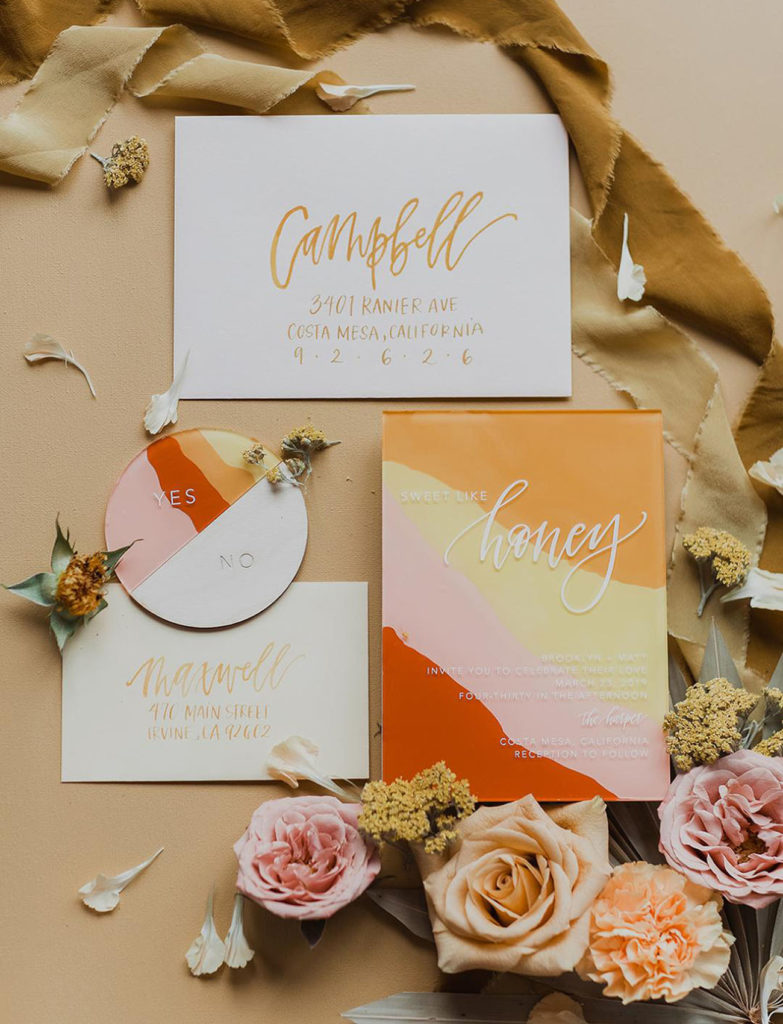 Meaghan Brianne Photo
Meaghan Brianne PhotoThe purpose of the inner envelope is for couples to write the names of each guest who is invited to avoid any confusion over who is or isn’t invited. If you are extending a plus-one invite, include the name of their partner or if it’s a generic guest, the envelope should read “Matt Walker and Guest”. If the invitation does not extend to a plus-one, just include the guest’s name. This is also the place to indicate whether children are invited, if you are inviting an entire family it can read “The Walkers”. However, if you just wish to invite the parents, it should read “Matt and Michelle Walker”.
7/ Outer Envelope
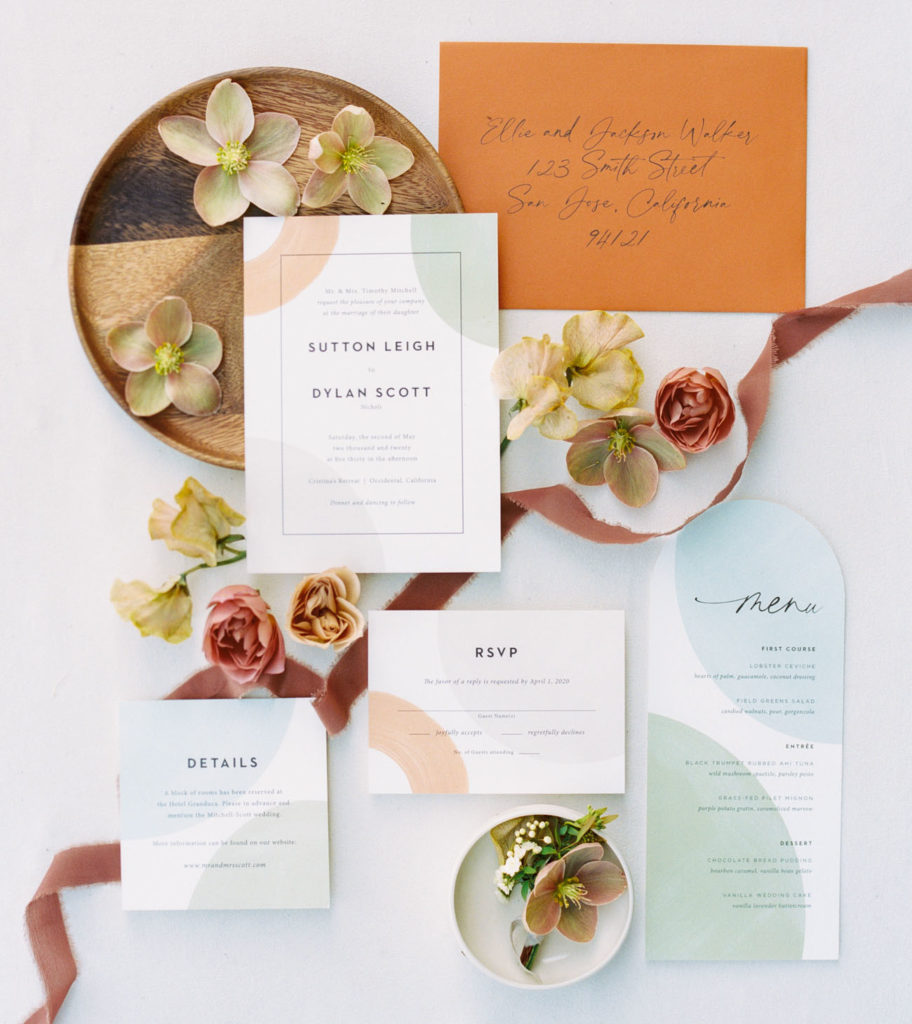 Olivia Marshall Photography
Olivia Marshall PhotographyThe original purpose of the outer envelope was to keep the contents clean and presentable so if the invitation got a little bashed in the postage process, the invitation suite would still arrive in pristine condition. While the postage system has improved over time, post can still be subject to the odd scuffle throughout its journey. Besides the practicality, traditionally the outer envelope addresses guests in a more formal manner, including full titles, with the inner envelope being more in-formal. Most stationery companies offer an addressing service to avoid you having to handwrite each address yourself.
8/ Belly Band
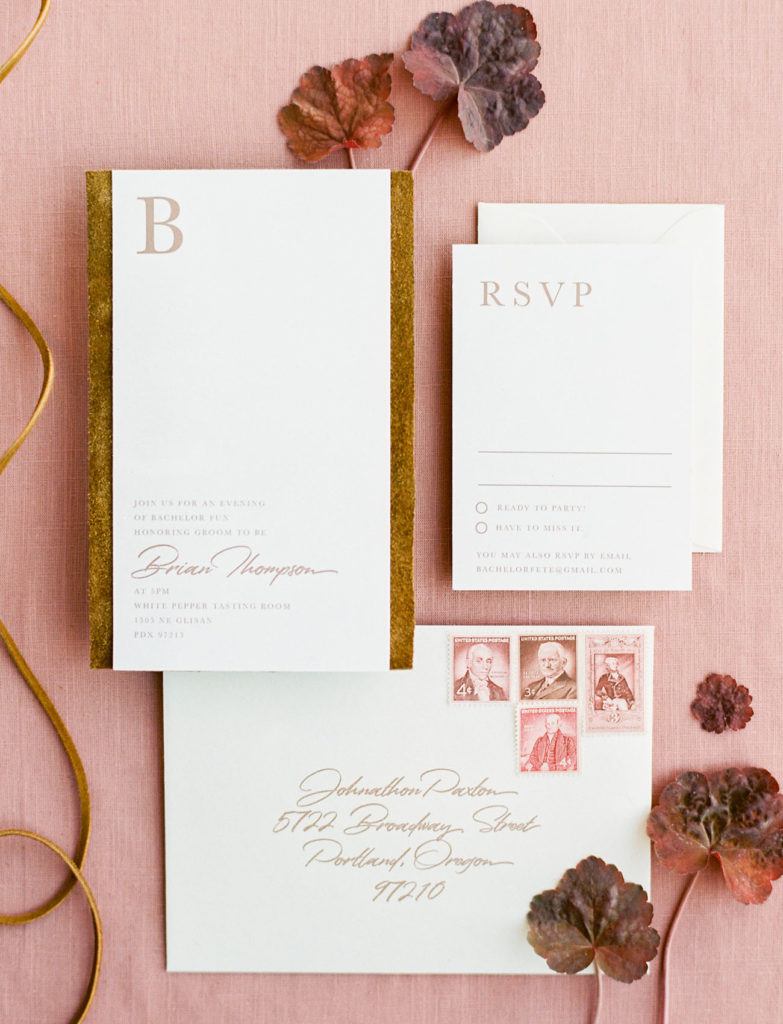 Sweetlife Photography
Sweetlife PhotographyA taut strip of paper or ribbon will hold the various pieces of the wedding invitation suite all together neatly. The colour or design of this should be coordinated with the rest of the stationery or theme so it all ties together.
9/ Postage
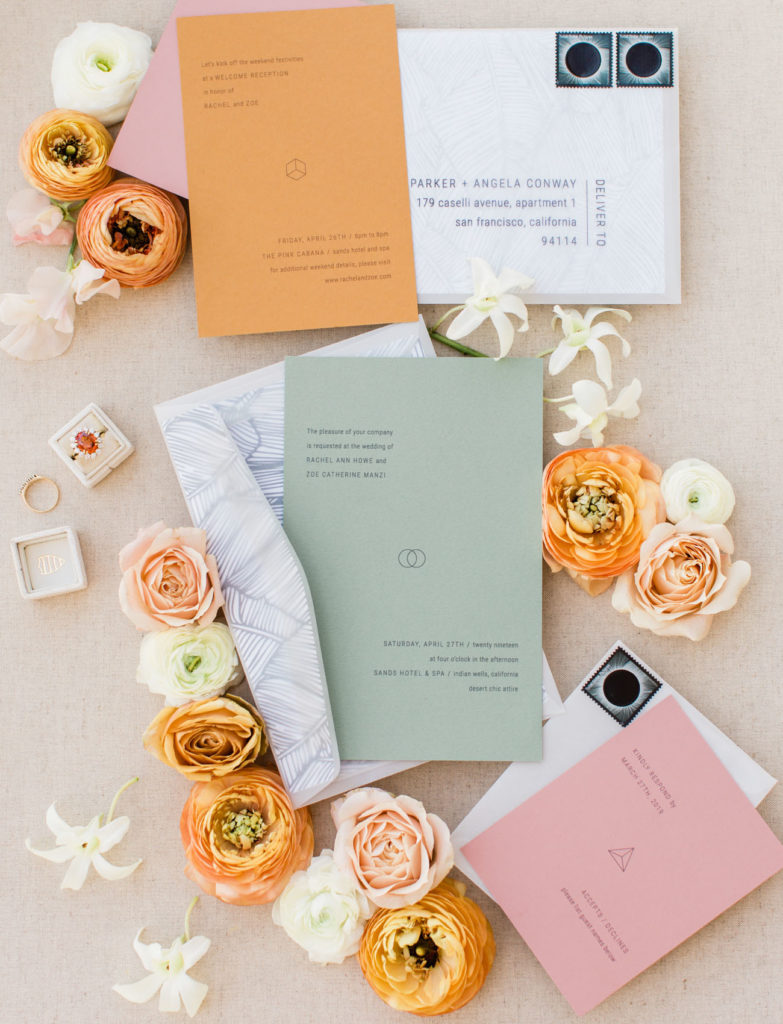 Loie Photography
Loie PhotographyWith the invitation suite comprising of so many different elements and taking into consideration the weight of the invitation itself, you can expect postage to be higher than the average envelope. Bring a completed invitation down to your local post office and ask them to weigh it and advise of postage cost within Ireland, the UK and wherever else in the world you may be sending it. You can also enquire about the types of stamps, An Post offers a special wedding-themed stamp which comes in booklets of ten. The difference is in the detail after all…
- Alexandra

